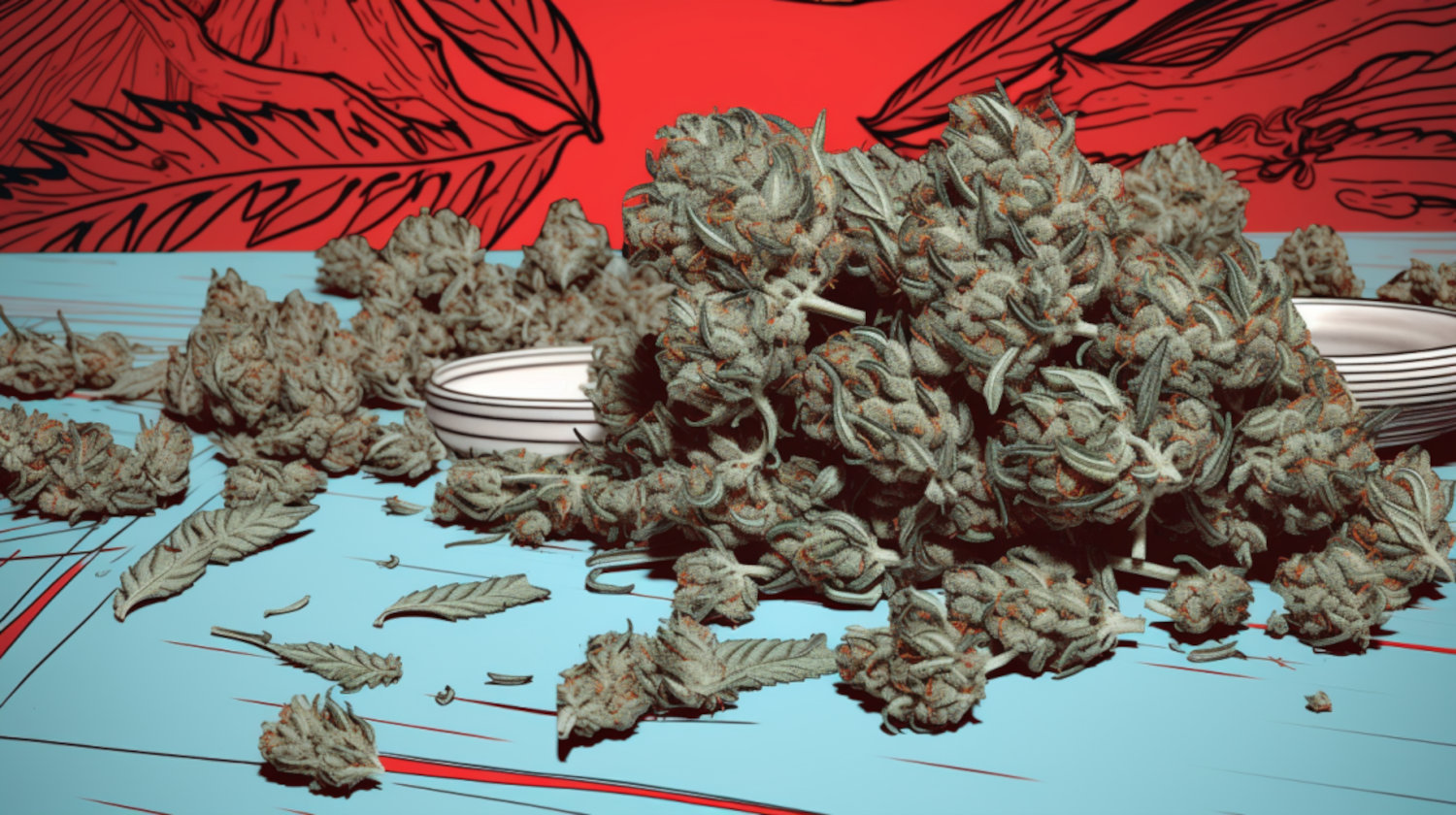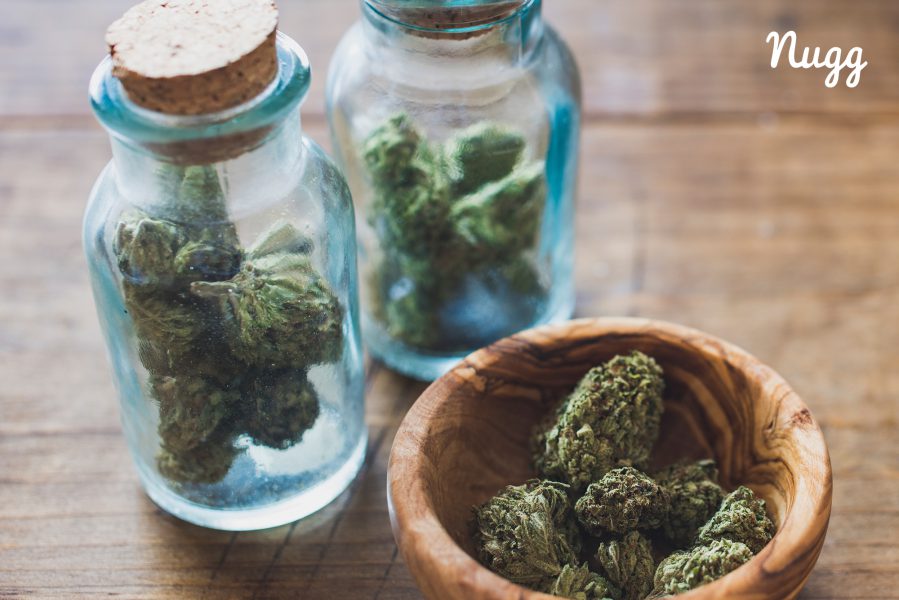It isn't your imagination. Sometimes, when people sweat, it smells oddly like cannabis. What causes this smell, and what can you do if this is your issue?
Once you know what cannabis smells like, you can't un-smell it. Sure, that unique, pungent, skunky odor lingers on your hair and clothes when smoking weed. But what about when you are at the gym or giving a presentation at work, and your sweat smells like weed?
Why Does Sweat Smell the Way it Does?
Human beings exude a lot of different odors. Some are pleasant, some not so much. Our body scent comes from a blend of our skin microbes and metabolic activities. Let's see how the human body creates sweat.
Humans have two types of sweat glands: apocrine and eccrine. We find eccrine glands in the palms and soles of the feet, but apocrine glands are the most odiferous. Apocrine glands get rolling during puberty. Found in our hairy regions, such as the armpits, groin, and scalp, these apocrine glands secrete an oily fluid (sweat) made up of proteins, lipids, and steroids.
By itself, sweat is essentially odorless. As it is broken down or metabolized by our skin's bacteria, the resulting odor is stinky. What makes up this scent profile are VOCs, or volatile organic compounds.
Volatile organic compounds include volatile fatty acids and thioalcohols. In sweat, volatile fatty acids like 3-methyl-2-hexenoic acid (3M2H) have a goat-like odor, and 3-hydroxy-3-methylhexanoic acid (HMHA) smells like cumin. And even though thioalcohols are only present in trace amounts, they release some of the most pungent VOCs called volatile sulfur compounds (VSCs). Sulfur smells come from thioalcohols and 3-methyl-3-sulfanylhexan-1-ol (3M3SH), making sweat smell like rotten onions or meat.
Everybody creates these compounds in their sweat based on the composition of the skin microbiota, as uniquely personalized as a fingerprint.
Why Does Weed Smell the Way it Does?

One component of the distinct smell of cannabis is a complex blend of terpenes, which are a form of VOCs. In cannabis, terpenes are produced in the trichomes, which are the tiny, sticky hairs covering the cannabis flower. Terpenes create the fresh smells of weed, like limonene's citrusy or pinene's pine tree scent. Terpene scents combine with cannabinoids to modulate the entourage effect for specific medical properties.
Myrcene is the most common terpene in cannabis. As musky-scented as myrcene may be, it doesn't wholly account for the skunk smell cannabis users and non-users recognize.
It took the discovery of a new family of volatile sulfur compounds (VSCs) to identify the familiar skunk scent of weed. Sulfur is one of the smelliest identifiable substances on earth. The chemical discovery of 3-methyl-2-butene-1-thiol (321MBT) as the primary odorant explains the unique odor.1
Not surprisingly, 321MBT matches one identical compound found in the "spray" of skunks. It truly is this compound, and not the terpenes, which dominate the signature smell of cannabis.
What are the Causes of "Skunk" Body Odor?
Is there a scientific reason why sweat might smell like cannabis? When body odor or sweat smells like weed, it's likely more than "What goes in must come out." Scientists aren't exactly sure what combination of compounds or microbial conversions causes the weed sweat smell.
Could the individual chemical compounds in cannabis and sweat be the answer? Dr. Matan Shelomi, a researcher at Germany's Max Planck Institute for Chemical Ecology, found that of the over 200 compounds in cannabis and the nearly 100 in sweat, only 11 matched. Interesting, but not overwhelmingly significant in explaining the cause of weed-smelling human perspiration.
Terpenes, the scent molecules of marijuana, seemed like a logical source of body odor smell. Dr. Justin Fischedick, a researcher at the Institute of Biological Chemistry at Washington State University, hypothesizes, "Since [terpenes] are fat-soluble compounds like THC, they might be stored in fat cells and get excreted during exercise." This may be true, but the resulting sweat molecules don't generally win admiration like the pine forest smell of pinene or the floral bouquet of linalool.
We must return to the volatile compounds produced to identify the precise cause of people's sweat smells. One of the primary reasons for this distinct odor is the interaction between sweat and the skin's microbial community.
As the apocrine sweat glands release their fluid onto the skin, commensal or helpful microbes metabolize protein, lipids, and steroid-rich sweat. Apocrine glands kick into action during heightened emotions like stress, fear, pain, and sex. Since the most active apocrine glands are located in the warm and moist scalp, armpit, groin, vaginal, and anal areas, the smell of weed may be more pungent here. Bacterial microbes thrive in these areas, converting this sweat fluid into VOCs and VSCs, emitting the weed smell.
Not everyone who uses cannabis will produce sweat that smells like weed. Factors like genetics, age, and diet can also influence body odor. Sometimes, distinct body odors indicate specific medical conditions or metabolic imbalances.
How to Stop Weed Smell From Sweat?

Like a fingerprint, an individual's body odor may be unique.
Body odor (BO) occurs following the interaction of sweat with the skin's microbial community. Deodorants and antiperspirants manage body odor. Deodorants contain chemicals that kill skin flora and bacteria to block the production of malodorous byproducts. Antiperspirants reduce sweat production by clogging sweat glands, often using aluminum chloride.
Some people may notice (or have someone tell them) that they smell like weed, even when they haven't consumed it recently (or ever). The human olfactory system and sense of smell are tricky. It's possible that another food or substance can mimic a cannabis odor when processed into perspiration by the body.
If smelling like cannabis is problematic, regular hygiene practices, including showering and applying deodorants or antiperspirants, can help reduce body odor. Wear breathable fabrics like cotton or wool, moisture-wicking synthetics for workouts, and wash all clothes afterward.
Shaving or removing hair from underarms and genitals allows sweat to evaporate more quickly, shortening the time for bacterial growth and lessening the body odor.
A growing body of research is exploring the use of probiotics and artificial microbial communities to reduce bad odor. Preliminary work has even looked into armpit microbial transplantation, where the armpit microbiome of a person with BO is replaced with bacteria from a healthy donor.2
Urine may also emit a weed scent, made more noticeable by insufficient water intake.
Distinct body odors can sometimes indicate specific medical conditions or metabolic imbalances. For example, trimethylaminuria is associated with a strong fish-like body odor, and hypermethioninemia produces an odor similar to boiled cabbage.
Sweat is an essential and natural body function, even if it occasionally smells like cannabis. Discuss a sudden or persistent change in body odor, especially if accompanied by other symptoms, with your doctor or healthcare provider.
References
- Oswald IWH, Ojeda MA, Pobanz RJ, et al. Identification of a New Family of Prenylated Volatile Sulfur Compounds in Cannabis Revealed by Comprehensive Two-Dimensional Gas Chromatography. ACS Omega. 2021;6(47):31667-31676. doi:https://doi.org/10.1021/acsomega.1c04196
↩︎ - Callewaert C, Lambert J, Van de Wiele T. Towards a bacterial treatment for armpit malodour. Exp Dermatol. 2017;26(5):388-391. doi:10.1111/exd.13259
↩︎
The information in this article and any included images or charts are for educational purposes only. This information is neither a substitute for, nor does it replace, professional legal advice or medical advice, diagnosis, or treatment. If you have any concerns or questions about laws, regulations, or your health, you should always consult with an attorney, physician or other licensed professional.




